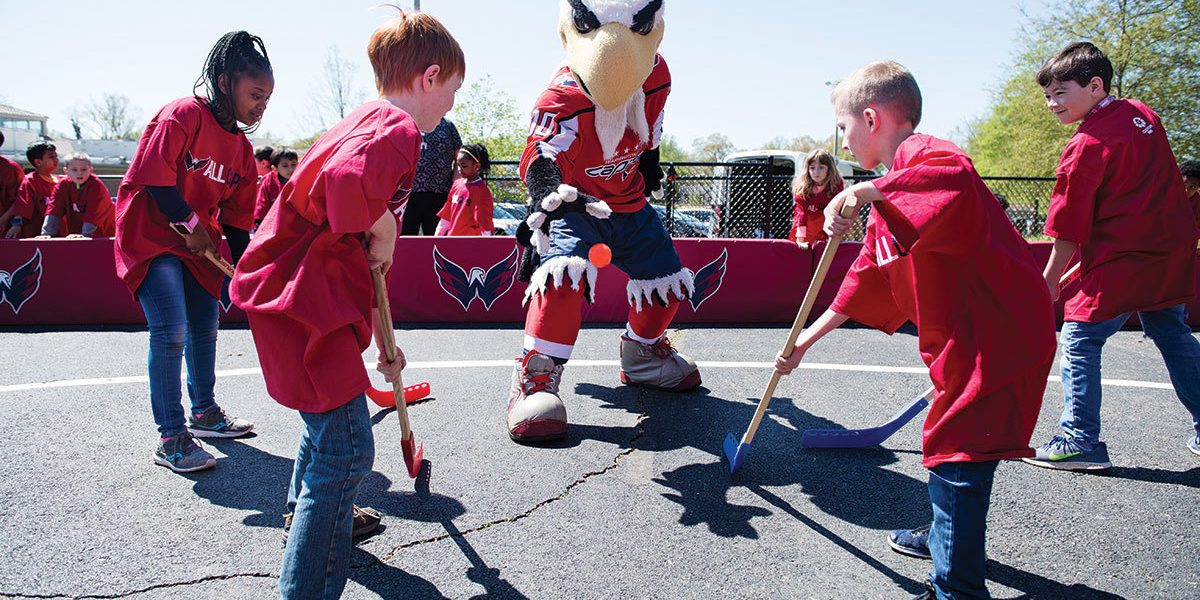Education & Family
A New Goal
The Washington Capitals bring street hockey to Baltimore City students.
If kids want to learn to play soccer, all they need is a ball and a place to run. Same goes for football and basketball. But hockey, with its sticks and pucks and—if they graduate from street to ice—skates and pads, is more of a challenge to learn, and that’s providing they can find a place to play.
The Washington Capitals Street Hockey program is hoping to break down those accessibility barriers in Baltimore. This summer, at the eighth annual Baltimore Street Hockey Tournament at the Madison Square Recreation Center on Gay Street, the Caps announced plans to partner with Baltimore City Public Schools and Baltimore City Recreation and Parks to expand the sports’ reach to the city’s more than 150 public schools and 42 community centers.
Through their donation of street hockey equipment, as well as supplying a curriculum and a day of teacher training this past August, Capitals Street Hockey will provide access to the sport for all ages in the BCPS system. Sticks, balls, and goals arrived at the schools and community centers at the end of November, and the program will kick off in schools this winter.
“As soon as I get the equipment, I’m going to start my hockey unit,” says Kyle Hughes, who has taught physical education at Thomas Johnson Elementary/Middle School for the past seven years. “I can’t wait. A lot of my students haven’t even been introduced to hockey. I’m going to have some who have never picked up a hockey stick before.”
While the partnership with BCPS will add a fun new element to gym class, the long-term goal for the initiative is to grow the sport in Maryland and connect with the team’s Baltimore fan base. The Caps partnered with D.C. Public Schools, in 2016, and, since then, the program has grown to include field trips where students can play full street hockey games or learn to skate at local rinks. Peter Robinson, the Capitals’ director of community relations, says they hope to replicate their success in Baltimore.
“If [students] take a liking to hockey and they’re interested in it and they want to go to the next level,” says Robinson, “then we can work with the school system or the students to get them connected with their local ice rink.” The idea is to build upon students’ hockey skills from year to year so that, down the line, the only true beginners are the kids who are new to school.
And who knows? On some distant NHL draft day, we might see a kid from Baltimore who learned to hold a stick in gym class don a cap and sweater.
